During the final act of Tamerlano, James Conway’s new production for English Touring Opera has the titular tyrant lead a captive king around the stage on a chain. Given the oppressive, deadlocked mood of Handel’s opera and this interpretation, you may recall Pozzo and Lucky in Beckett’s Waiting for Godot: that frozen dialectic of master and slave in which power traps its holder as much as its victim. Conway’s farewell gift to ETO, after two decades of high achievement as artistic director, Tamerlano is sung with terrific verve and dramatic credibility by an impressive young cast.
Here, in contrast, Handel’s third masterwork from 1724 (along with Giulio Cesare and Rodelinda) edges closer to the Theatre of the Absurd. We enter a bleak black box of rigid roles and thwarted desires in which each break for freedom tightens the inmates' fetters, and where hell often does lie in other people. I saw the production at Saffron Hall in Saffron Walden, in a friendly acoustic that showcased the adept, agile and sometimes very affecting vocal craft of each of its five singers. They had fine support from the flavourful period-instrument accompaniment of the Old Street Band, conducted by Jonathan Peter Kenny (a Handel singer himself).
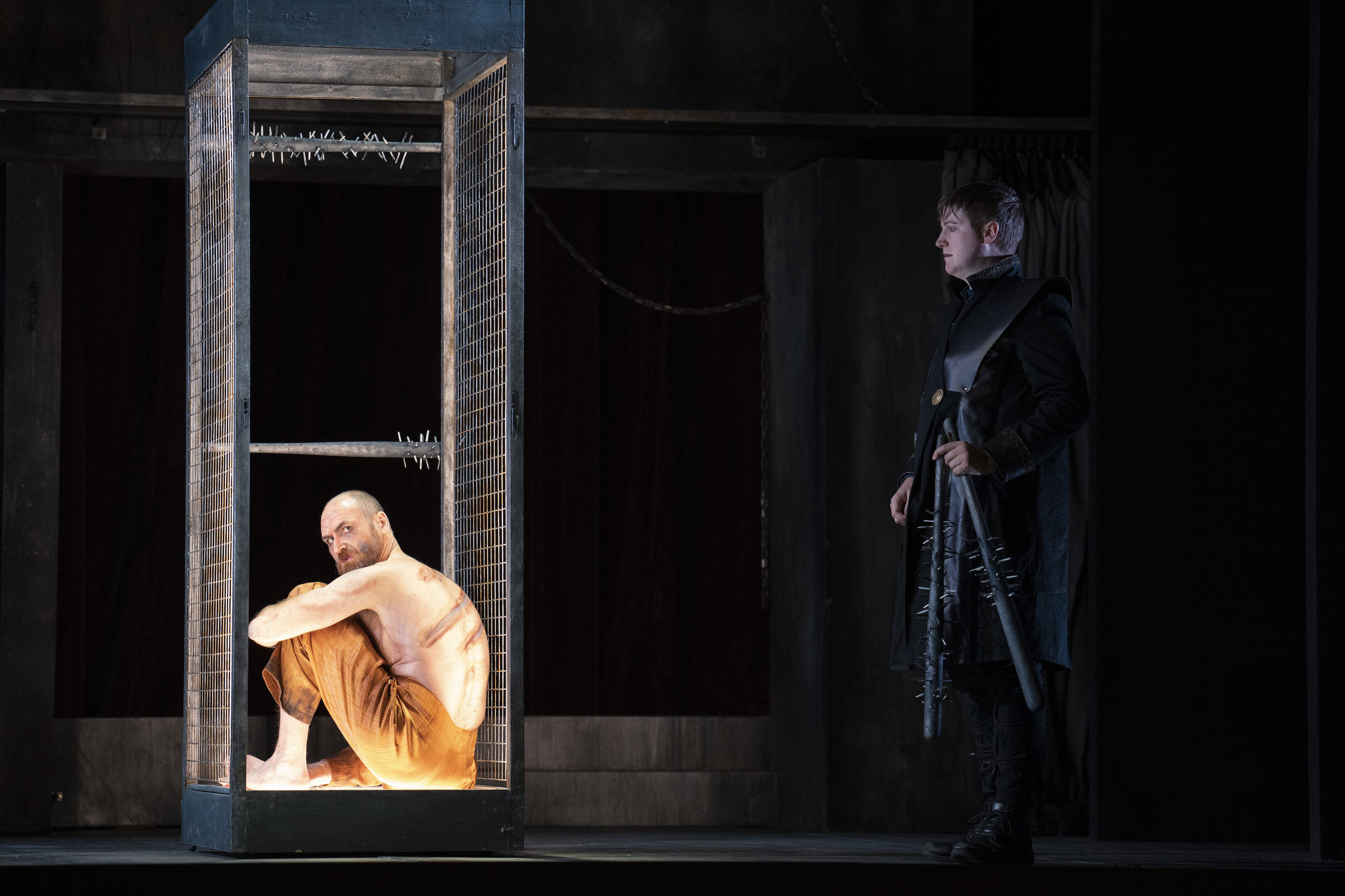 In Tamerlano, the Tartar goatherd-turned-conqueror has invaded the realms of the Turkish king Bajazet, confining him and his daughter Asteria as he fixes their fate (we first see the abject, half-naked Bajazet in a tiny cage, clad in Guantánamo-style prison garb) (Jorge Navarro Colorado, pictured above). Asteria is betrothed to Tamerlano’s Greek ally Andronico. But the victor wants her for himself, and plans a deal that would offload his current intended – the Pontic princess Irene – to his buddy-satrap, Andronico.
In Tamerlano, the Tartar goatherd-turned-conqueror has invaded the realms of the Turkish king Bajazet, confining him and his daughter Asteria as he fixes their fate (we first see the abject, half-naked Bajazet in a tiny cage, clad in Guantánamo-style prison garb) (Jorge Navarro Colorado, pictured above). Asteria is betrothed to Tamerlano’s Greek ally Andronico. But the victor wants her for himself, and plans a deal that would offload his current intended – the Pontic princess Irene – to his buddy-satrap, Andronico.
Asteria – the prime mover of the plot, and only figure to imagine a plausible way out of the gridlock – feigns consent to the despot’s scheme while nursing a dagger that will slay the tyrant, and redeem her and her father’s honour. Her exit strategy misfires. The tyrant doubles down on his cruelty (he even threatens to send Asteria to the slaves’ brothel). Only Bajazet’s poison-induced suicide prompts a change of heart. Tamerlano may have reformed in a heartbeat, as Enlightenment convention demands. But the lovely, subdued closing E minor coro for the three principals left standing (with Bajazet dead, Asteria silenced by grief) hints at lasting sorrow rather than darkness overcome.
Without servants, chorus or fancy stage effects, Conway’s staging unfolds in a grim, distressed, comfortless prison-palace. Only the shifting background colours – twilight-purple to blood-crimson – of Tim van ’t Hof’s atmospheric lighting suggests passing time. Onstage flames flare and fade, while Rebecca van Beeck’s set supplies a metal grid that the singers climb, but that turns out to be a ladder to nowhere. Death alone will open the door to freedom here.
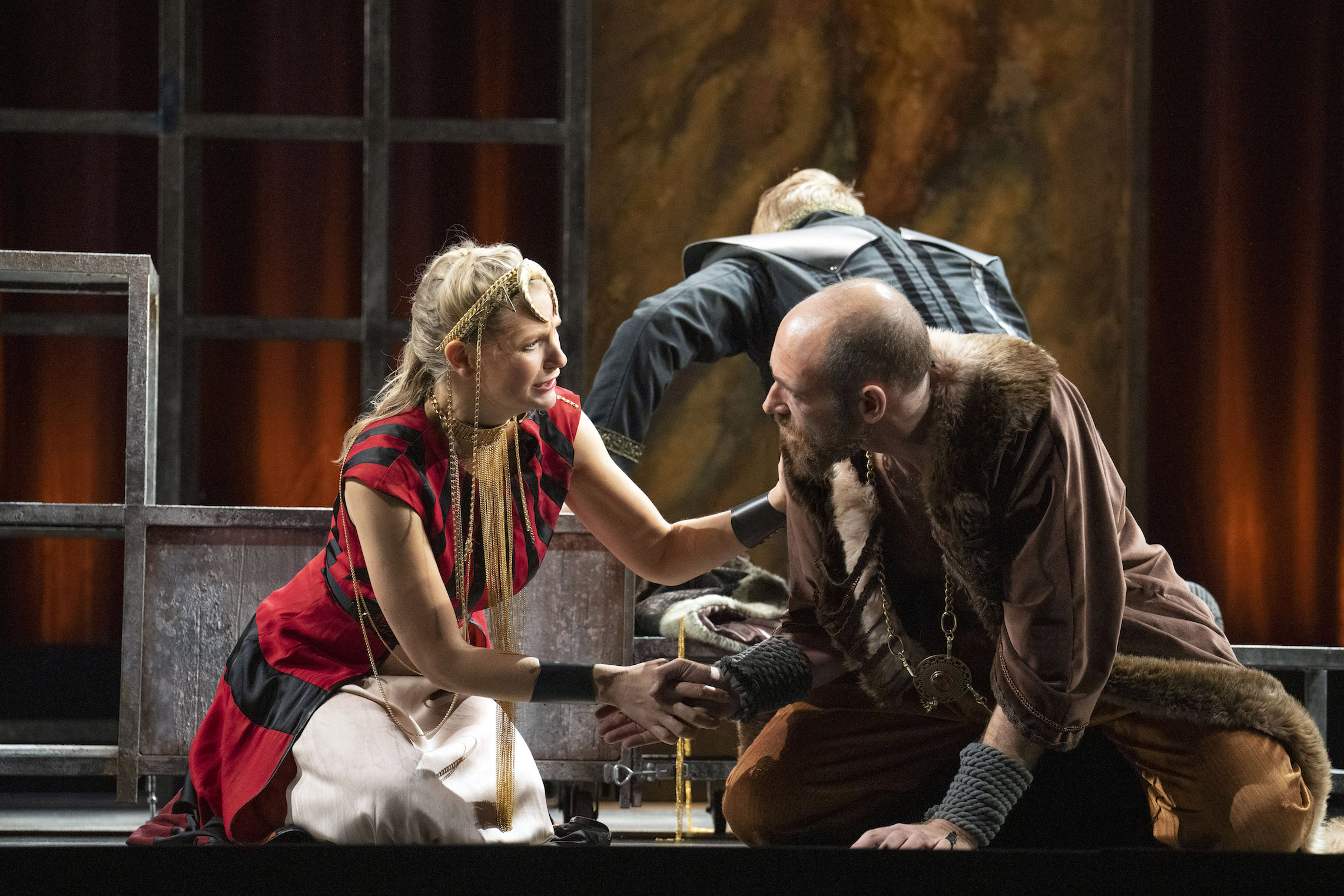 Ellie Laugharne’s polished soprano (pictured above with Jorge Navarro Colorado) imbues Asteria with dignity, nobility, outbursts of passion, and the reflective resourcefulness that the men who vie to claim her lack. Numbers such as “Si potesse un dì placare” rank high in the long roll-call of blockbuster Handel arias, but Laugharne – like the rest of this cast – sang such highlights as steps within a fully integrated drama, not as semi-detached showpieces. With his eye on the stage more than the score, the composer cut some great music from Tamerlano, but contrived startlingly modern scenes as a result. None feels more remarkable than the close of Act 2 as Asteria, her assassination plot revealed, seeks a renewal of faith in turn from those who doubted her. Pared-back confrontation replaces stylised dialogue, with austere music focused firmly on the scene’s innate drama.
Ellie Laugharne’s polished soprano (pictured above with Jorge Navarro Colorado) imbues Asteria with dignity, nobility, outbursts of passion, and the reflective resourcefulness that the men who vie to claim her lack. Numbers such as “Si potesse un dì placare” rank high in the long roll-call of blockbuster Handel arias, but Laugharne – like the rest of this cast – sang such highlights as steps within a fully integrated drama, not as semi-detached showpieces. With his eye on the stage more than the score, the composer cut some great music from Tamerlano, but contrived startlingly modern scenes as a result. None feels more remarkable than the close of Act 2 as Asteria, her assassination plot revealed, seeks a renewal of faith in turn from those who doubted her. Pared-back confrontation replaces stylised dialogue, with austere music focused firmly on the scene’s innate drama.
Handel wrote both Tamerlano and Andronico for star castrati, Pacini and Senesino; today, that means a pair of meaty, virtuosic and exacting counter-tenor roles. As the peasant autocrat, Rodrigo Sosa dal Pozzo’s Tamerlano found intermittent charm as well as menace as he bluffed and bullied his way through Bajazet’s ruined fortress. This coarse thug can effectively cajole, and Sosa dal Pozzo conveyed finesse as well as force across his range in arias that call for rippling coloratura runs and the occasional riveting, muscular crescendo.
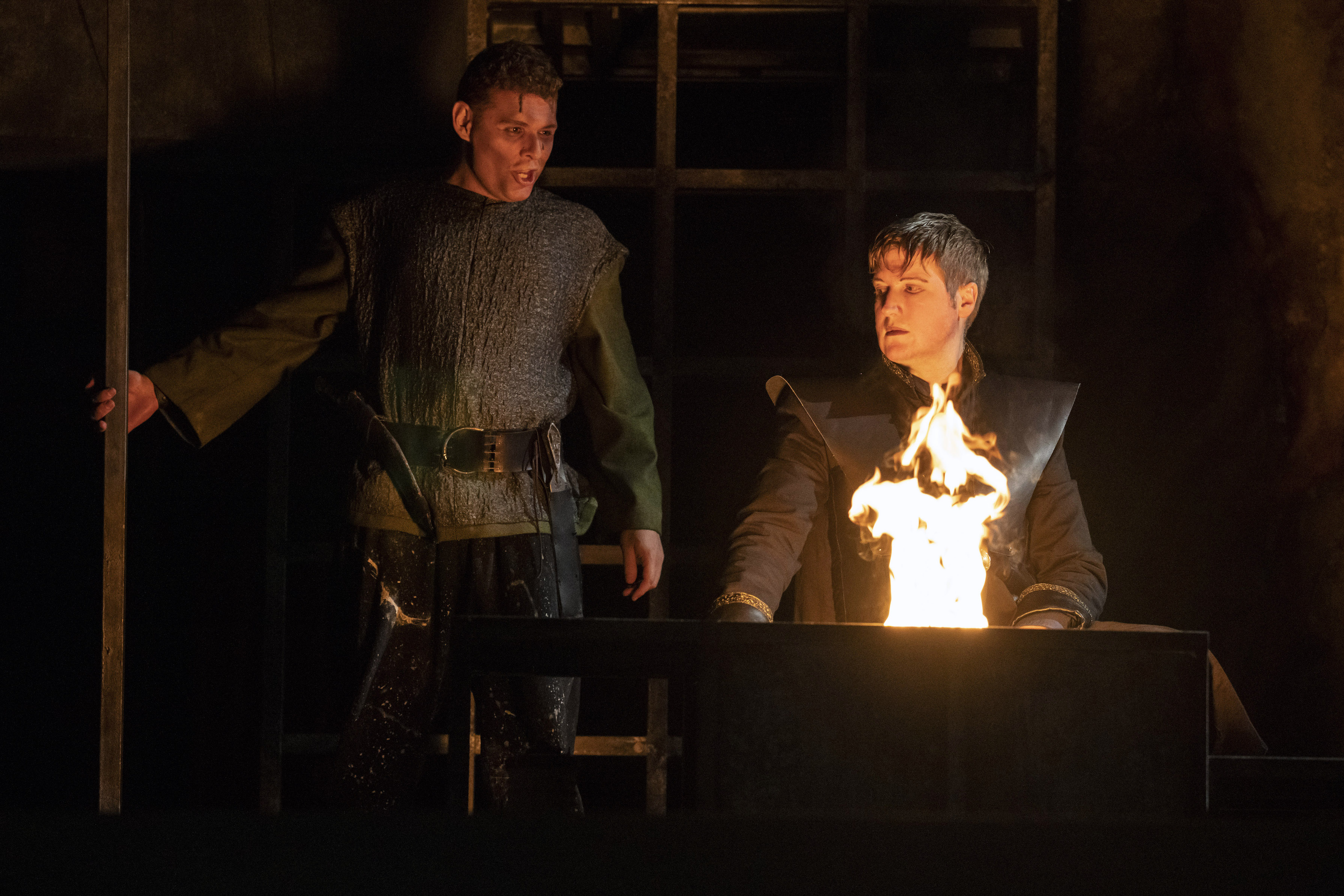 Andronico’s music, as it gives voice to his doubts and hesitations, can be more nuanced as well as equally spectacular. James Hall (pictured above, right, with Rodrigo Sosa dal Pozzo) could tear forcefully into stand-out numbers such as “Piu d’una tigre” without ripping them into melodramatic shreds. His late duet with Laugharne, “Vivo in te”, with the woods gurgling into ecstasy beneath, proved that this generally sombre score can scale melodic peaks when that tough taskmaster Handel decides. Hall’s duet with Sosa del Pozzo, “Coronata di gigli e di rose”, made a thrilling stand-off for two powerful, flexible but differently-toned voices. Overall, no singer indulged in stop-start, scenery-chewing bravura. The extended recitatives were clearly and rhythmically delivered, the action moved swiftly, and the Old Street Band lent pace and shape as well as colour to the piquant instrumental commentary, with driving continuo and perky woodwind to the fore.
Andronico’s music, as it gives voice to his doubts and hesitations, can be more nuanced as well as equally spectacular. James Hall (pictured above, right, with Rodrigo Sosa dal Pozzo) could tear forcefully into stand-out numbers such as “Piu d’una tigre” without ripping them into melodramatic shreds. His late duet with Laugharne, “Vivo in te”, with the woods gurgling into ecstasy beneath, proved that this generally sombre score can scale melodic peaks when that tough taskmaster Handel decides. Hall’s duet with Sosa del Pozzo, “Coronata di gigli e di rose”, made a thrilling stand-off for two powerful, flexible but differently-toned voices. Overall, no singer indulged in stop-start, scenery-chewing bravura. The extended recitatives were clearly and rhythmically delivered, the action moved swiftly, and the Old Street Band lent pace and shape as well as colour to the piquant instrumental commentary, with driving continuo and perky woodwind to the fore.
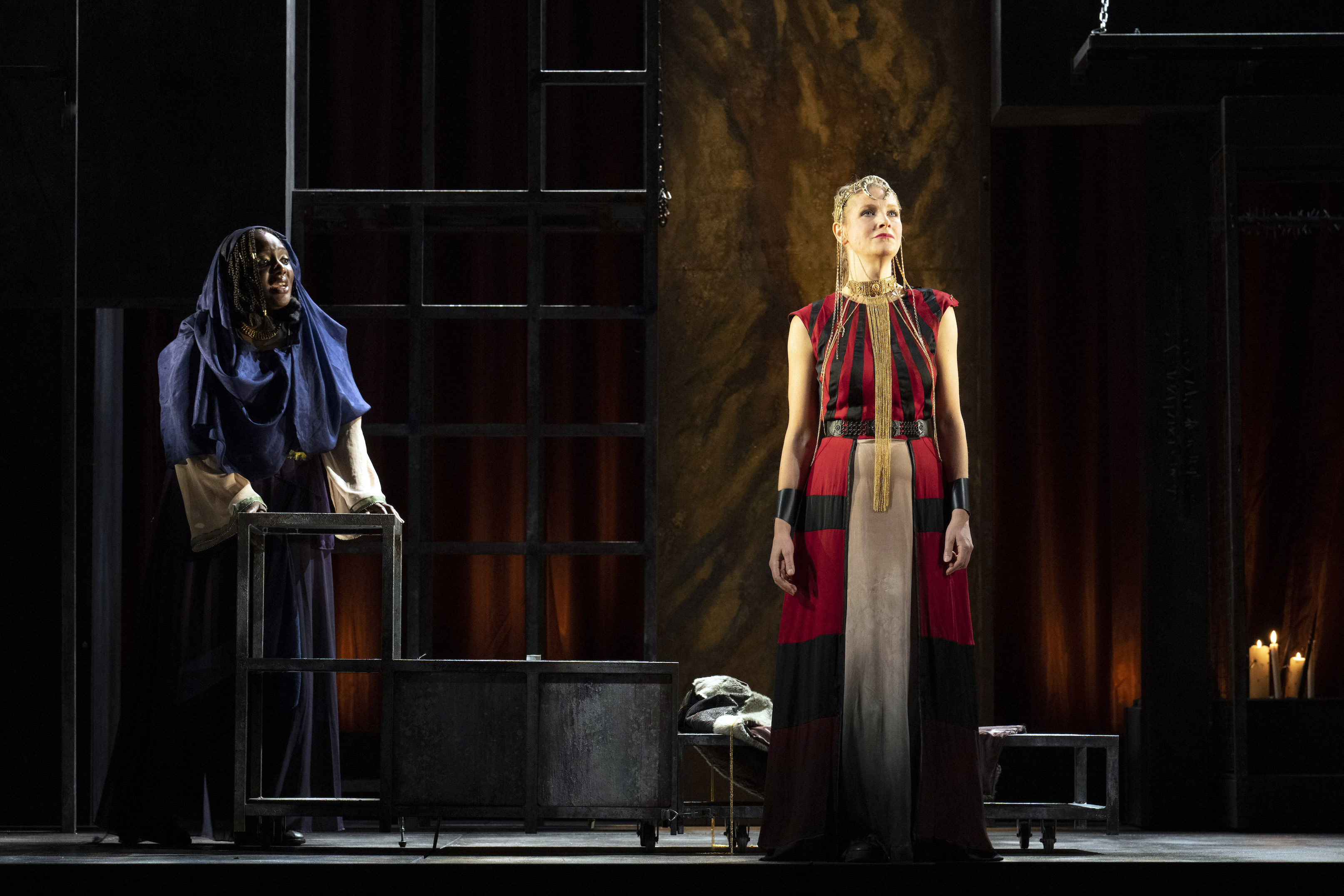 As an aghast, empathetic bystander (almost a chorus in herself), April Koyejo-Audiger’s Irene – disguised until the final reveal – made a touching and steadfast emissary from a slightly saner world: above all, in her bewildered aria "Par che mi nasca in seno”. (pictured above with Ellie Laugharne). However, the whole enterprise rested on the flayed back of Jorge Navarro Colorado’s Bajazet: beaten, frail, but always guarding a flickering spark of resistance. This was one of opera’s first leading tenor roles. Colorado endowed it not so much with serene majesty – for the broken Bajazet must re-learn arts of survival from Asteria – as a mesmerising sense of power in eclipse. Much of the time he lies prostrate, literally at the feet of his vanquisher, yet capable of compelling fury as well as refined anguish. Even his arias of raging defiance – such as a magnificent “Empio, per farti guerra” – merely deny his actual subjection. His dying wrath against the accursed Tamerlano (and farewell aria to Asteria, "Figlia mia") chilled and moved just as they should.
As an aghast, empathetic bystander (almost a chorus in herself), April Koyejo-Audiger’s Irene – disguised until the final reveal – made a touching and steadfast emissary from a slightly saner world: above all, in her bewildered aria "Par che mi nasca in seno”. (pictured above with Ellie Laugharne). However, the whole enterprise rested on the flayed back of Jorge Navarro Colorado’s Bajazet: beaten, frail, but always guarding a flickering spark of resistance. This was one of opera’s first leading tenor roles. Colorado endowed it not so much with serene majesty – for the broken Bajazet must re-learn arts of survival from Asteria – as a mesmerising sense of power in eclipse. Much of the time he lies prostrate, literally at the feet of his vanquisher, yet capable of compelling fury as well as refined anguish. Even his arias of raging defiance – such as a magnificent “Empio, per farti guerra” – merely deny his actual subjection. His dying wrath against the accursed Tamerlano (and farewell aria to Asteria, "Figlia mia") chilled and moved just as they should.
Tamerlano refuses to let characters or audience off the hook. The tyrant’s moral rebirth can only feel perfunctory after a plot in which the underlying pulse of sexual sadism never ceases to beat. This is a dark work indeed, but an undeniably great one. ETO gave it all the care, skill and unflagging commitment it deserves. To witness Baroque music-theatre at this level of proficiency and seriousness on a Saturday evening in an Essex market town is a precious blessing from a fragile cultural infrastructure we can never take for granted. Plenty of our own potentates have long been keen to dismantle it; we may have to resist their wrecking-ball again soon.
- English Touring Opera plays Tamerlano in Buxton (5 November), Exeter (12 November) and (in concert) Truro (10 November)

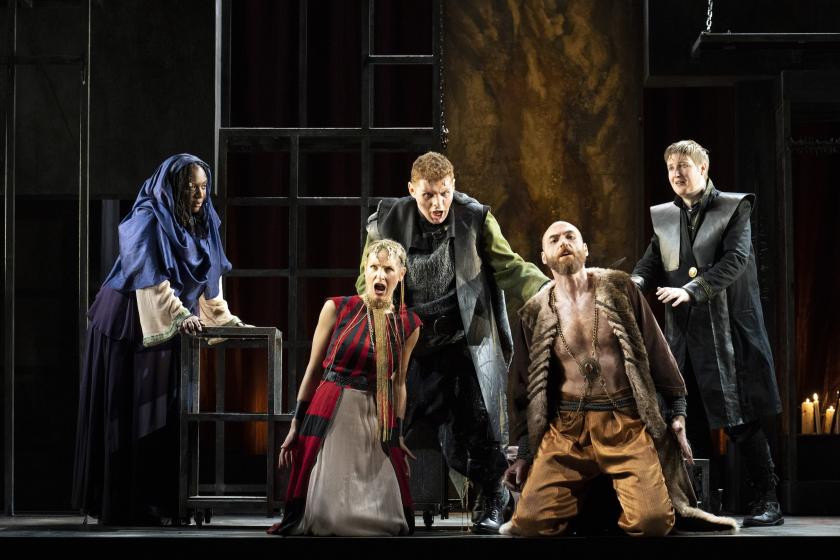













Add comment